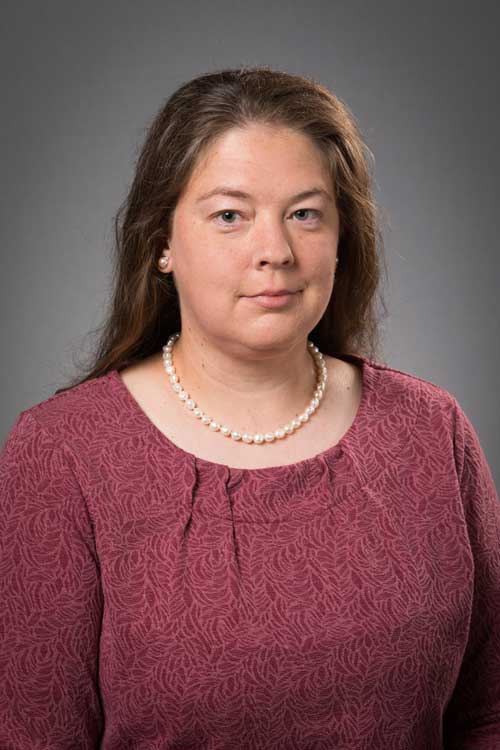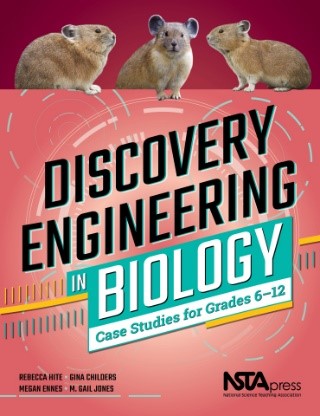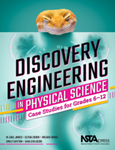Gina Childers, Ph.D.
Email: Gina.Childers@ttu.edu
Phone: (806) 834-7313
Office: Education 268
Gina Childers is an Associate Professor of STEM education in the Department of Curriculum and Instruction at Texas Tech University. She currently serves as a co-director of the Center for Advocacy in Teacher Leadership for Youth and Schools with Technology (CATALYST) and is on the editorial board for the International Journal of Science Education. Previously, Dr. Childers was an Assistant Professor of Middle Grades/Secondary Education at the University of North Georgia, Director of Research and Development for a nonprofit education organization, instructional coach serving rural, suburban, and urban schools in North Carolina, and a high school biology teacher in Savannah, Georgia.
Currently, Dr. Childers is directing research studies focused on interest and learning of STEM at science fiction conventions and within recreational games. Furthermore, Dr. Childers recently has been awarded three National Security Agency (NSA) grants in collaboration with the University of North Georgia in designing cybersecurity education professional learning opportunities for K-12 teachers in Georgia and conducting research on teachers' perceptions of cybersecurity awareness.
She was named Texas Tech University’s Outstanding Researcher in 2023, and she was awarded the Texas Tech Alumni New Faculty Award (2023), Applied Research in Immersive Environments for Learning (ARIEL) SIG “Best Paper” in 2017 by the American Education Research Association (AERA), and the John C. Park National Technology Leadership Fellowship Award in 2016 by the Association for Science Teacher Education (ASTE) in collaboration with Dr. Rebecca Hite (Texas Tech University) and Dr. M. Gail Jones (North Carolina State University). In 2011, she was recognized as Teacher of the Year at Savannah Early College. Dr. Childers has an energetic cat and a zany chihuahua and enjoys crocheting, gardening, hiking, and playing computer games.

Education
- Doctorate (Ph.D.) in Science Education, North Carolina State University
- Master's in Public Health, Armstrong Atlantic State University, Savannah, Georgia
- Master's in Curriculum and Instruction, Armstrong Atlantic State University, Savannah, Georgia
- Bachelor of Science in Biology, North Georgia College and State University, Dahlonega, Georgia
Areas of Expertise
- Technology use in STEM Education
- Informal, Non-Formal, and Community Engagement STEM Education
- Program Evaluation
- Cybersecurity Education
Teaching
- EDCI 6360 - Introduction to Data-driven Models of Inquiry in Curriculum and Instruction
- EDCI 6361 - Advanced Studies in Data-driven Models of Inquiry in Curriculum and Instruction
- EDCI 5375 - Creativity in the Curriculum
- ESTM 6380 - Advanced Practicum in STEM Education
- ESTM 6399 - STEMinar: Technology and Humanities: The Intersection of Self, STEM, and Video Games
Service to the Profession
- Editorial Board of the International Journal of Science Education
Research
Practitioner Books
 Hite, R., Childers, G., Ennes, M., & Jones, M. G. (2019). Discovery Engineering in Biology: Case Studies for Grades 6-12. Arlington, VA: NSTA Press. ISBN 978-1-68140-614-5 Available here.
Hite, R., Childers, G., Ennes, M., & Jones, M. G. (2019). Discovery Engineering in Biology: Case Studies for Grades 6-12. Arlington, VA: NSTA Press. ISBN 978-1-68140-614-5 Available here.
 Jones, M.G., Corin, E., Ennis, M., Clayton, E., & Childers, G. (2019). Discovery engineering in physical science: Case studies for grades 6-12. Arlington, VA: NSTA Press. ISBN 978-1-68140-618-3. Available here.
Jones, M.G., Corin, E., Ennis, M., Clayton, E., & Childers, G. (2019). Discovery engineering in physical science: Case studies for grades 6-12. Arlington, VA: NSTA Press. ISBN 978-1-68140-618-3. Available here.
College of Education
-
Address
Texas Tech University, College of Education, 3002 18th Street Lubbock, TX 79409 -
Phone
(806) 742-2377 -
Email
educ.webmaster@ttu.edu
